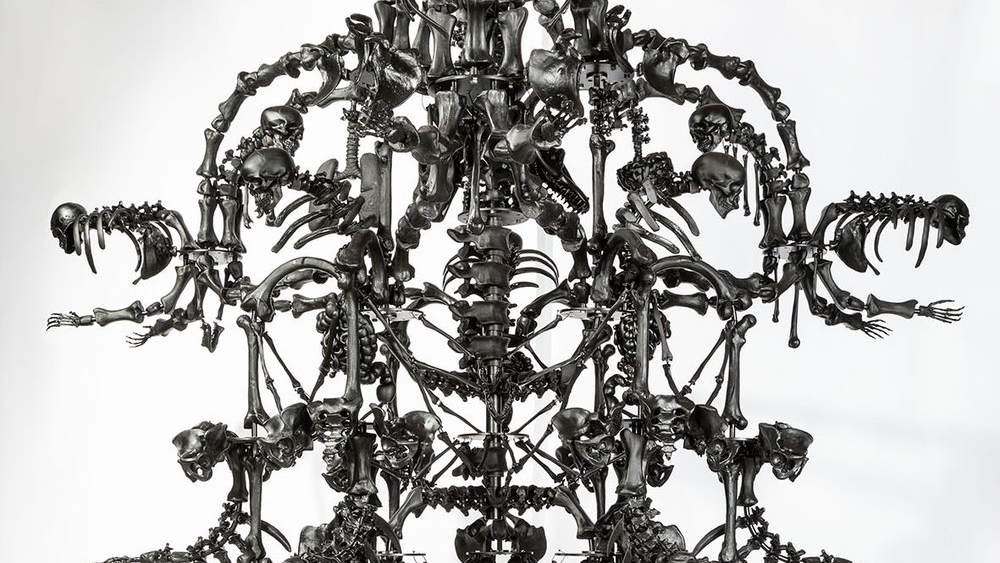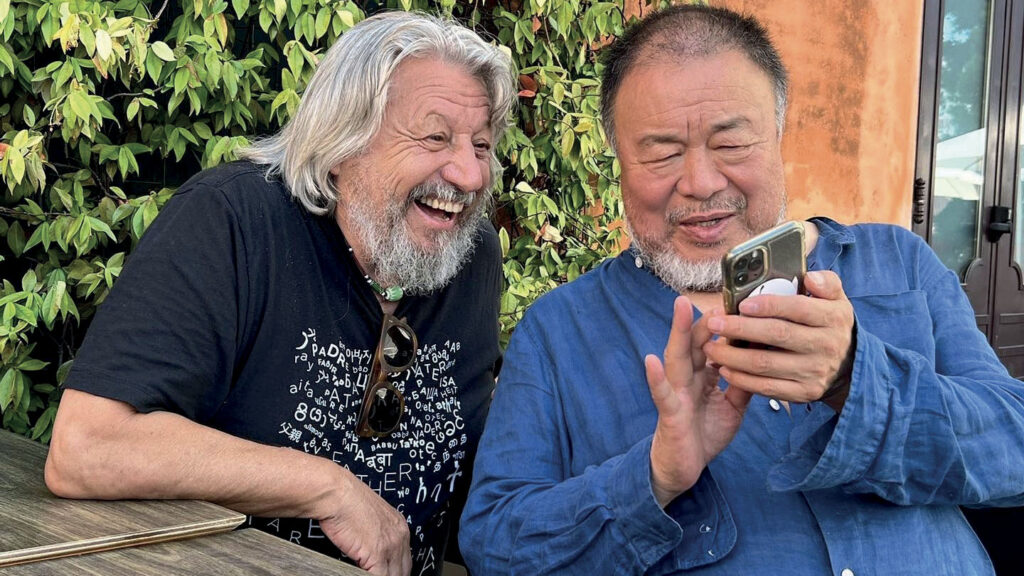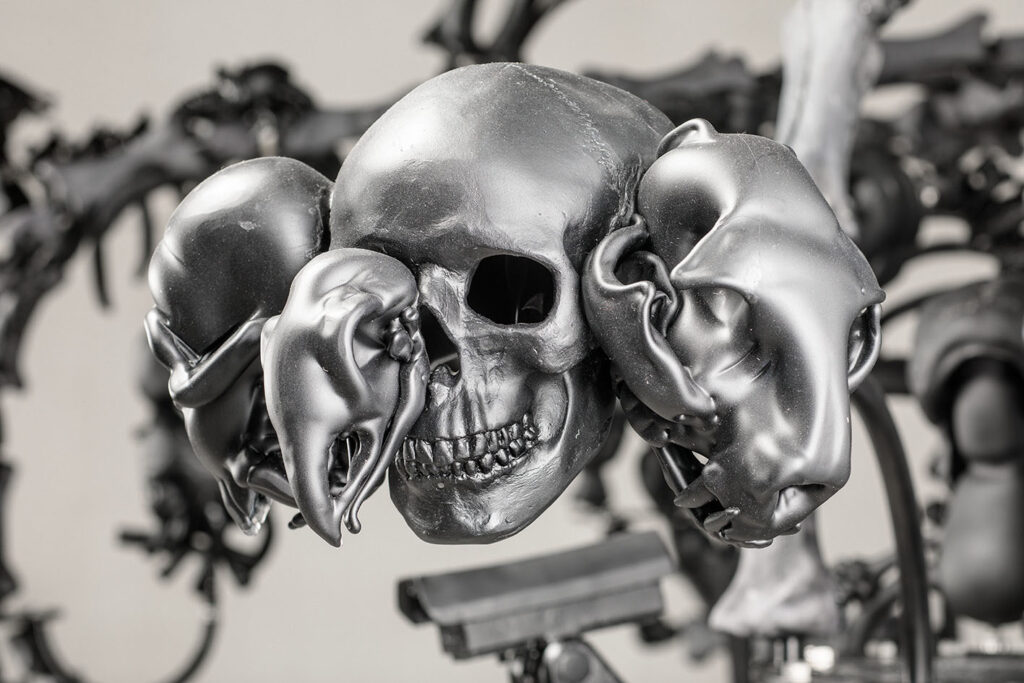
81. Venice Film Festival

80. Venice Film Festival

79. Venice Film Festival

The Biennale Arte Guide
Foreigners Everywhere

The Biennale Architecture Guide
The Laboratory of the Future

The Biennale Arte Guide
Il latte dei sogni

A series of new glass works by the world-renowned activist and artist create a contemporary dialogue with the historic Venetian palazzo. These new site-specific works include The Human Comedy, a colossal chandelier that is the result of a three-year collaboration between the renowned Chinese artist and the master craftsmen of Berengo Studio.
An exhibition that is on first name terms with the present being and leaves a mark in it. And yes indeed, for once it’s not a mechanic spot wanted by a press launch. It’s an exhibition not to be missed, with bells on, for many reasons: for its content, its identity, the language, never so profoundly glocal as in this case. The bodily dimension of the sculpture is in a dialogue with millennial handcraft know-how, in a universally spiritual take that the highlight artwork of the exhibition, the enormous glass chandelier The Human Comedy– Memento Mori, radiates even only visually.
The exhibition conceptual design, in its complex realization, has the signature of two authentic aces operating in the contemporary art scene. Ai Weiwei needs no introduction since he’s one of the most important and influential artists in contemporary art. Among the big labels of global art, his is the one that more than anyone else has been able to combine on the one hand a deep excavation of contemporary complexity, with his contradictory artistic background made of vivid tension canalized in his free creative expression without conditioning; and on the other hand his capacity of employing media communication to break unyielding and elitist barriers, that too often separate high culture from the passion and the curiosity of the people. His art is also made of limits, of sometimes violent and coercive obstacles against the same expressive freedom that characterizes it.
The second, the gallerist, producer, and director of extraordinary artistic glass projects, Adriano Berengo, again needs no introduction, at least not in Venice. In our opinion he’s without any doubt one in a million, if not the only Venetian today who can be proud of having the same visionary charge, mercantile skills, the same grip over the whole world, understanding the crossroads that different continents can generate, interacting with one another, to close deals and let new ideas thrive, that distinguished the activity and entrepreneurial planning ability of great Venetians during the golden age of the Serenissima. When Venice was New York. Among all his ventures and productive and declarative projects in contemporary art using glass, Glasstress is the world’s most important collective of this artistic expression form, held in Venice every two years in concomitance with the Venice Art Biennale. In conclusion, a merry among arts that simply had to be and is now officially celebrated in the extraordinary environment of the Palladian church of San Giorgio Maggiore.
Thanks to the courtesy of Fondazione Berengo we have the pleasure and are honored to host in our pages the words that the protagonists have chosen for the official catalogue of the exhibition.

Imet Adriano Berengo, the founder of Berengo Studio, on 28 August 2009. At that time Adriano and his son Marco came to my studio in Beijing, and we planned to work together. After many years, I visited Berengo Studio on Murano Island for the first time. Adriano took me to their workshop. There I saw how glass masters took glass out from a furnace and formed a shape. Seeing this complicated process was a very notable experience. Although I have a longtime experience in porcelain, it is different from glass; high temperature is needed to transform soft clay into hard ceramic and to have a glaze adhere to the surface, but only after it is shaped. Glass, in contrast, is formed under a high temperature and needs a long time to cool down, which makes glassmaking a very demanding kind of craft.
What motivated me to create artworks in glass is my curiosity for traditional crafts; I am in awe of crafts. Glassmaking has a history of at least 3,600 years. Glass is a material between and beyond the states of air, liquid and solid. It has a unique quality that makes it a very confusing and attractive material since its discovery. Working with traditional crafts takes a lot of effort. I need to understand the material and craftsmanship first, and then I work with my collaborators who put my ideas into practice. It is a very long and laborious process. After I got to know the shaping possibilities of glass, Berengo Studio and I made some attempts together, including the most important artwork exhibited here titled La Commedia Umana. It is 8.4 meters high and 6.4 meters wide. This giant black chandelier is composed of around 2000 pieces, weighing 2,700 kg. It is a glass assemblage of human skulls, skeletons, internal organs, bones, animals such as crabs and bats, and surveillance cameras – these symbols have all appeared in my previous artworks. Each part of this chandelier was handmade during these two years’ work; it took a lot of glassmakers’ efforts to complete this gigantic and difficult artwork. Adriano has incredible energy and desire for creativity.
In our collaboration, he tirelessly and diligently realized the artist’s imagination. It is a unique ability. Equally important as the completion of the artworks, I feel very satisfied with the collaboration process that enabled the artworks to exist. As I often create works with challenging forms and scales, they cannot be accomplished without the craftsmanship and patience of the glassmakers and model-makers, and the assistance of Stefano Lo Duca at Berengo Studio.
It was thanks to the encounter with traditional crafts, our research and extension, and the partnership with Berengo Studio that this exhibition became possible. The exhibition encompasses what is related to tradition, including the chandelier, furniture, and traditional human sculpture, and our daily objects such as Marble Takeout Box and Marble Toilet Paper, the latter being an important topic during the pandemic. I am also exhibiting my recent works in Lego, a material that I use to create flat artworks.
Glass, a special material and a part of our daily life, bears witness to joy, anxiety and worry in our reality. In its presence we reflect upon the relationships between life and death, and between tradition and reality.

My collaborations with Ai Weiwei began several years ago, when I went to visit him while he was under house-arrest. He is an artist I have always admired, and I knew that I wanted to convince him that glass was worth his time to experiment with as a material. We began small: casts of his hand, and later his arm. Projects that brought a vivid new dimension to his famous photographic series where he gave a finger to power. These small glass sculptures sparked what would become a new interest for Weiwei, and I am delighted that since those first few meetings our relationship as collaborators, but also as friends, has continued to evolve.
This particular collaboration has been ongoing for a number of years, with Weiwei popping into Berengo Studio in Murano whenever he could to update us. Each time he’d come he’d observe what we had created, both in our casting workshop and in the furnace itself with blown glass. Each visit a new development of the final form took place, another step that brought us closer to this colossal hanging sculpture. It has been a journey to witness the germ of an idea grow in such a way so consistently over such a long stretch of time. Weiwei has always had a great respect for craft, for the skilled hands that have spent years learning their technique, and in this work he uses this interest and manipulates it for a vision that is large, wild, unreserved and urgent. He has taken glass as a material and transformed it, not only making the largest Murano glass chandelier ever created but doing so in a completely originally way. Can it even be called a chandelier? This vast hanging sculpture in black glass defies definition, nothing like it has ever really been seen or created before. Part of its beauty is it remains a mystery, a human tragedy, a comedy, a tangled mess that we each must seek to unwind in our own time. La Commedia Umana does not hide in preexisting forms but bursts out from the familiar, stacking skeletons and organs without bodies into a grandiose architecture that belies their simplicity. Although he began this work with us in Murano long before the pandemic and the war in Ukraine we can’t help but look at this monumental sculpture as a work that now carries with it the weight of our collective loss from the past few years. It is a work that stirs emotions, that forces us to come to terms not only with our own mortality but with the part our lives have to play in the greater theatre of human history.
After its dramatic debut in Rome earlier this year I’m extremely proud to be able to bring this vast sculpture back to the landscape from which it was born: the Venetian lagoon. In the ancient baths in Rome the black morphing bones seemed to respond directly to the mosaic that mocked the chandelier from the wall with its ancient inscription “Gnothi sautòn” (know thyself). Here in Venice instead we find the potential for a very different scene. Rather than the ruins of an empire past, we find the artwork enveloped by the 16th century Palladian architecture of the church of San Giorgio Maggiore. The interior of the church is bright, white marble sets off the dark black of the glass beautifully, creating a dark orb at the centre of the light, a contradiction in terms. Brought back to Venice, its spiritual home, the chandelier cannot help but reflect upon the fragile state of this floating city and the delicate ecosystem of the lagoon. The progress and variety of artworks we have had the honour of creating in collaboration with Ai Weiwei has gone from strength to strength over the years. We may have begun with the simple cast of the artist’s hand, but now we stand in the shadow of a monumental and historically significant sculpture. In the spiritual setting of a church we find that we have achieved something even more profound. The sculpture stands in the holy building as a hymn to God, a hymn to humanity, a powerful scene invoking mercy for our mortal souls.